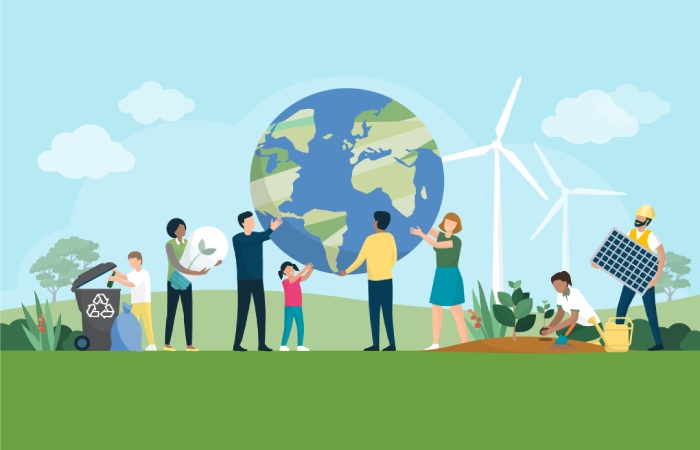Table of Contents
Introduction
There are many reasons Why it is important To Engage Communities In Preparedness Efforts. It is essential to engage communities in preparedness and disaster response plan efforts. It can help the community reduce disaster response time and will ensure the success of rescue and recovery operations. If a community is involved in disaster preparation, it enables everyone’s skills, needs, challenges, and resources to be considered.
In this article, you will learn about community engagement in general. Then, you will understand why engaging communities in preparedness efforts is essential. Furthermore, you will also learn about the significant challenges governments and institutions face in this regard. Finally, we will recommend some practical strategies that you can use for community preparedness. Hence, to learn more, read on through to the end of the article.
When communities are engaged in preparedness actions for disasters, that leads to improved strength and preparedness effectively.
- Trust between organizations and communities acquired by community engagement results in efficient coordination and activeness during crises.
- Community preparedness influences the reduction of disaster impact.
- Community helps to educate the public to reduce threats during disasters.
- Communities create connections with federal, state, and local officials to identify and mitigate climatic dangers.
- By working as a team, everyone can assist in saving the nation from damage and help to keep it resilient when affected by risks, such as natural disasters – earthquakes or tornados, human acts – terrorism, and unexpected pandemics such as COVID-19.
What Is Community Engagement?

According to the World Health Organization, Community Engagement is “a process of developing relations that enable shareholders to work together to address health-related issues and ensure wellbeing to achieve positive health impact and outcomes.”
Engaging communities helps promote a community’s wellbeing. Community engagement allows communities to change their behavior, policies, environment, programs, and practices within. There are various levels of community engagement, which helps in finding the level of involvement among people.
Reasons Why It Is Important To Engage Communities In Preparedness Efforts
1. Local Knowledge And Expertise
In every community, some people have deep-rooted knowledge about their local area. It could be knowledge about the physical terrain, weather patterns, high-risk zones, or even certain practices passed down through generations. Additionally, they have expertise in local resources available and how to utilize them effectively. For instance, local fishermen may understand coastal weather patterns better, while farmers can provide insight into droughts or flooding.
2. Empowerment And Ownership
Active involvement in preparedness efforts often gives individuals a sense of empowerment. They transition from passive aid recipients to active participants in their safety. This shift leads to increased ownership over preparedness plans, making them more likely to participate, implement, and promote them within their communities. This sense of ownership also encourages maintenance and regular updating of these plans and measures, ensuring they remain effective over time. Furthermore, community empowerment can foster a sense of solidarity and collective responsibility, critical elements for disaster resilience.
3. Improved Disaster Response
Community members are indeed the first responders when disaster strikes. They are the first to provide aid, carry out rescue operations, and ensure that the affected individuals receive immediate care. These community members can be trained in first aid, search and rescue operations, and essential disaster management through preparedness efforts. They can also be taught how to use the resources effectively. By doing this, the community’s immediate response to a disaster can be greatly improved, significantly reducing the loss of life and property.
Challenges Faced While Community Engagement For Preparedness Efforts

Community engagement faces many internal and external challenges. Some can be overcome by useful resourcing and a convenient strategy to reduce dangers and challenges.
The most common five challenges in community engagement are:
Lack of Resources – Communities often lack time and experienced staff to make reports and feedback effectively for all the phases of disaster events.
Accessibility – Community engagement involves holding events in varied areas to train people in their local languages, which could limit access to helpful training and community engagement.
Equal Representation – A community engagement had to make sure that all voices of the representatives were listened to equally and had to plan surveys and voting to get data about the deeper parts of the community.
Disillusionment – community engagement becomes disillusioned if their intakes are not taken forward, and they may get furious if their opinions are not included in preparedness efforts.
Proper governance – a structured governance strategy to community elegance allows the community and organization to make a balanced effort to fight disaster events. Still, it involves conflicts and resistance by the members.
Effective Community Engagement Strategies for Preparedness Efforts
The first step of CBDP is to identify and analyze your community’s potential threats and challenges. You can use participatory tools such as hazard mapping, risk ranking, vulnerability assessment, and historical timeline to collect and visualize data on the frequency, intensity, and location of hazards and your community’s exposure, sensitivity, and adaptive capacity.
The following are some of the most effective strategies and best practices that communities can carry out to make sure to engage communities in efforts of preparedness:
Ensure a safe and secure environment for communities to engage with each other.
- The community must also test various techniques of engagement.
- The community must have a sense of purpose.
- There should be good communication among neighborhoods about various needs and dangers.
- Authorities must encourage community engagement at multiple federal, state, and local levels.
- Make sure the community engagement training is fun and activity-oriented.
- There must be practical cooperation among communities to make space for every team member.
- The authorities and trainers must conduct training and outreach sessions to prepare the community for any climate event or disaster.
Funding For Community Preparedness

Preparedness grants by the US government support citizens in building and sustaining the capability to protect and mitigate terrorism and other disasters.
Federal grants are provided for states and organizations for food, healthcare, and other utilities during disasters.
Grants given by the government to provide public services and support recovery initiatives are listed in the catalog of federal domestic assistance.
CDC public health emergency preparedness funds 50 states, four cities, 8 US territories, and freely associated states.
CDC provides funds for public health preparedness and responses during emergencies.
Communities also collect funds from US citizens and others by conducting fundraising programs during disasters to overcome problems.
Final Thoughts
Why is it essential to engage communities in preparedness efforts? I hope you have learned the importance of engaging communities in preparedness efforts. Engaging communities helps in fighting and mitigating the disaster for the better. Apart from that, it also helps in increasing trust among communities.
However, using the practical strategies mentioned above would be best to prepare communities for disasters. Do you have any more info to add? Please share your ideas and opinions with us in the comments section below.
Also Read: Alineaciones De New York Red Bulls Contra Inter De Miami

